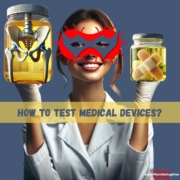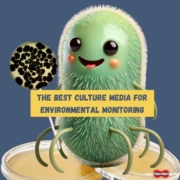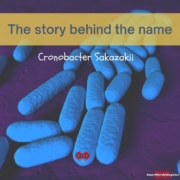Microbiology: How to Test Medical Devices?
To be completely honest, at SuperMicrobiologists, our expertise lies more in pharmacopoeia and food microbiology. So, when we were asked about microbiological analyses of MDs (Medical Devices), we were a bit lost.
To address this, we reached out to SuperMicrobiologists who specialize in microbiology within the MD field.
Here are their insights.
Best QC strains
Pharma : The best QC Strain suppliers
We polled the SuperMicrobiologists.
Here are their favorite QC Strains
What is a Medical Device?
Let’s start by defining what an MD is… and as you’ll see below, it’s not that simple!
A medical device is an instrument, apparatus, equipment, software, or material (the list is quite long!) used for medical purposes to diagnose, prevent, monitor, treat, or alleviate diseases.
This can range from a bandage to an artificial heart, including prostheses (hip), hyaluronic acid syringes, cements, and dialysis kits.
Now, let’s look at the microbiological analyses performed on these medical devices.
What is a Dose Audit?
Every microbiologist working in medical devices knows it. The dose audit is THE main test for MDs… sterilized by irradiation (Gamma, Beta, X-ray).
This audit, conducted every 3, 6 or 12 months, verifies the continuous effectiveness of sterilization by irradiation.
Here’s how the dose audit is performed:
First, a biocharge analysis of the MD is conducted to determine the number and nature of microbial contaminants.
This information is then used to calculate a radiation dose, called the verification dose, to which the MDs must be exposed. The verification dose is lower than the routine dose.
After irradiation at this verification dose, sterility tests are conducted on the MDs to ensure that the initial contamination has been correctly eliminated. Depending on the results, the minimum irradiation dose required for routine sterilization of the MD is determined.
Still with us?
Note that dose audits only concern the gamma sterilization process (irradiation).
Bioburden Analysis on Medical Devices
For bioburden analyses on medical devices, we follow the NF EN ISO 11737-1 standard (sterilization of healthcare products – Microbiological methods).
These bioburden tests are performed regardless of the type of sterilization (ethylene oxide, radiation, heat treatment).
They allow us to observe the evolution of the MD’s contamination over time and during production.
Here’s the protocol used*:
- The MD is immersed in a liquid.
- Through a physical treatment (shaking, ultrasonic bath, etc.), microorganisms are recovered.
- The liquid is then filtered, and the membranes are incubated on different types of agar.
- The plates are read after 3 to 7 days of incubation, similar to a pharma bioburden test.
This test generally involves 30 analyses (10 MDs from 3 different lots).
*Protocol used in most cases… but there are special cases:
Some are extracted by circulating eluent (e.g., tubing/pack kits). The device can also be soluble. Some are not submersible because they float.
Sterility Test on Medical Devices
Similar to the bioburden analysis, we do not follow pharmacopoeia texts but an ISO standard, specifically NF EN ISO 11737-2: Sterility test.
The principle of the sterility test is very close to the one performed in the pharmaceutical industry.
The MD is immersed in a culture medium for 14 days.
After 14 days, if microbial growth (turbidity, flocculation, sediment) is observed, the MD is contaminated. If no microbial growth is observed, the MD is not contaminated.
Unlike in pharma, in MDs, we use only one culture medium, TSB. Thioglycolate (for anaerobic microorganism analysis) can also be used if anaerobic microorganisms are found in the bioburden analyses.
For the dose audit, sterility tests are performed on 10 MDs. If a maximum of 1 out of 10 sterility tests is positive, the dose audit is validated (we see you jumping up and down… but remember that during the dose audit, we work with a “verification” dose and not the routine dose). If more than 1 out of 10 tests are positive, then an investigation is initiated… and that’s not a good sign at all!
Microbiological Analysis Challenges for Medical Devices
Microbiological analysis of medical devices is indeed a challenge.
Still doubtful?
Here are two examples that should change your mind.
The Choice of Containers
What makes microbiological analysis of MDs complicated is that they come in very (very, very) different natures, shapes, and sizes. As a reminder, we can have bandages or 40 cm hip prostheses.
For each MD, a specific protocol must be adapted, but more importantly, suitable containers must be found, and that’s no easy task!
For some MDs, enormous containers are required. This can go up to flexible containers filled with 20 liters of culture medium. Who wants to handle that in their lab?
Technical Issues
When analyzing an MD, all internal (and external) parts of the MD must be in contact with the culture medium or diluent.
When the MD contains tubes (e.g., infusion), the inside of the tubes must be in contact with the liquid.
Often the only solution is to cut the tubes… all while maintaining asepsis (under a PSM or worse, under an isolator). Can you imagine the challenge?
Analyzing MDs requires solid skills, experience, and imagination (which microbiologists usually have in abundance!).
This might be why most MD manufacturers do not have a microbiology lab and prefer to outsource microbiological analyses to specialized laboratories.
Microbiological Analyses on MDs and Rapid Methods
We questioned several specialized laboratories about the possibility of using rapid microbiological methods for MD analysis.
They unanimously agreed that it’s always beneficial to get a microbiological result in a few hours rather than in 7 days (especially during the bioburden validation stages).
However, since analyses are generally not for release (or very rarely), laboratories are rarely under pressure to provide results quickly.
We would like to thank Geoffrey Chaigne, Amélie Lamarque, Laura Marand, and Philippe Chabeaud for their testimonies.













Leave a Reply
Want to join the discussion?Feel free to contribute!